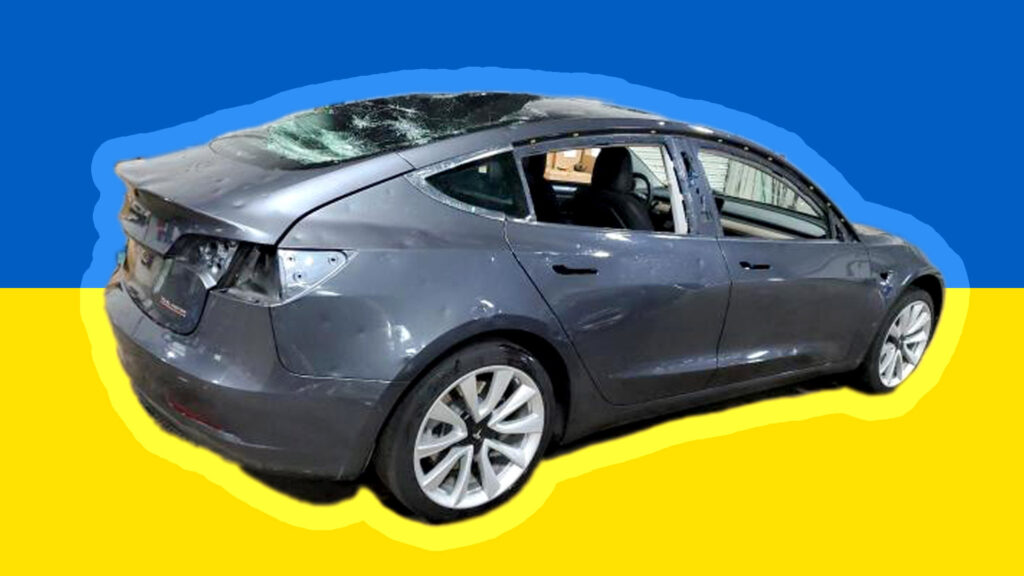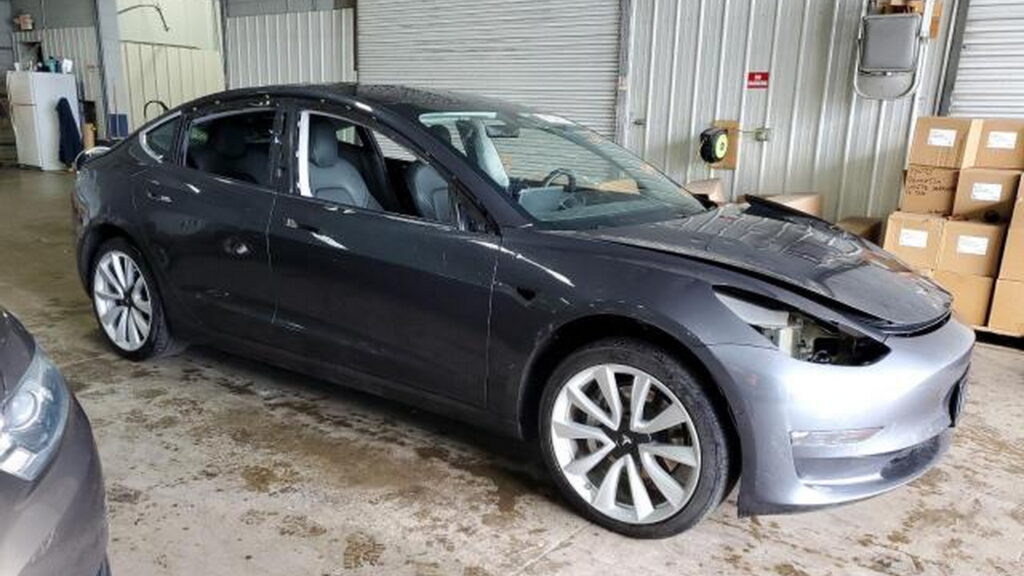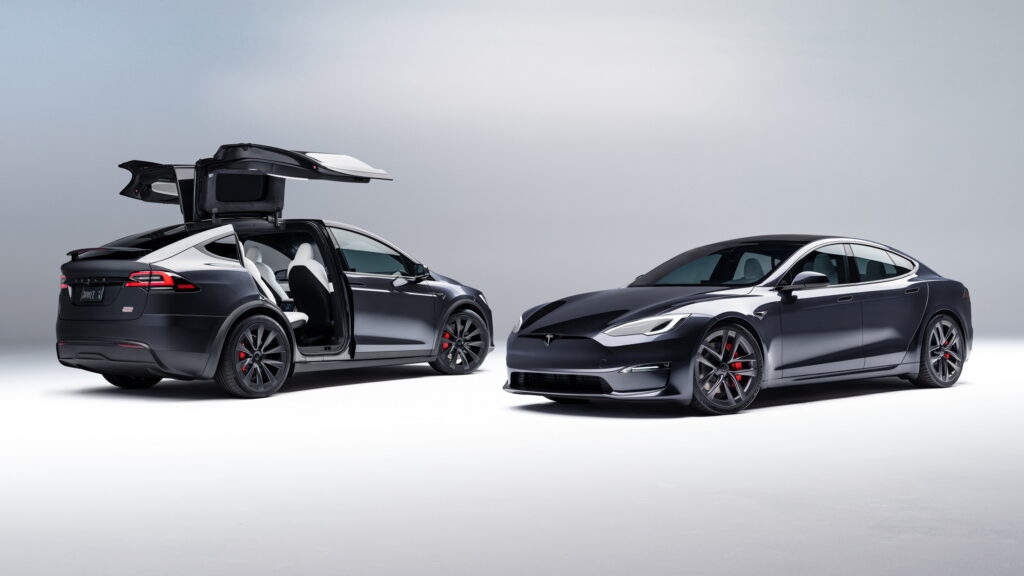In the U.S. and Canada, insurers readily total damaged EVs, which Ukrainian mechanics promptly repair and sell to cost-conscious drivers seeking relief from high fuel costs
5 hours ago
 –>
–> 
–>
It’s a common story for EV owners in the U.S. and Canada. You’re driving your shiny new electric car around, and then you get into a relatively minor accident. Your insurer deems it a total loss. It’s an unfortunate reminder of how expensive it can be to make minor repairs to a Tesla if you live in North America. However, in other parts of the world, such as Ukraine, the script is flipped.
Teslas listed on Copart and other auction sites are being exported to countries with a growing appetite for EVs and a willingness to work on them, such as the besieged country that is battling Russia. There, mechanics are willing to tackle vehicles whose batteries are deemed too dangerous for repair in the U.S. and Canada.
Despite the fact that few automakers sell new EVs in Ukraine, roughly nine percent of newly registered vehicles are electric, reports Wired. That’s twice as many as in the neighboring Czech Republic and Poland, where the practice of refurbishing used EVs is less common.
advertisement scroll to continue
Read: Former Tesla Owner Shocked To Find His Totaled EV In Ukraine, Still Logged Into His Account

Photo Copart
For Ukraine, as well as other countries like Nigeria and the United Arab Emirates, the U.S. and Canada serve as a gold mine of affordable EVs. Ivan Malakhovsky, the owner of a repair business in Dnipro, located in eastern Ukraine, states that his shop handles approximately 100 Teslas per month, with a significant portion coming from overseas.
“We have problems in our lives and can fix them, whether a battery or a full-scale invasion,” Malakhovsky told Wired. “Electric cars, electric car batteries—it’s no problem.”
Malakhovsky, along with other mechanics across the country, primarily rely on OEM parts for repairs whenever feasible. Occasionally, they may even fuse together components from two or three salvaged vehicles to craft a single operational EV. Moreover, surplus battery cells often find a new lease on life by powering e-bikes.
And this isn’t a new phenomenon, it’s been going on since before the Russian invasion. If anything, the war, and its impact on fuel prices, has only turbocharged the practice of importing and repairing damaged EVs. It has also meant that the stereotypes around EVs are a little different in Ukraine than they are in, say, the U.S.
“There is a joke here that all poor people are driving electric cars, and all the rich people are driving petrol cars,” Malakhovsky said. “Tesla is a common-people, popular car because it’s very cheap in maintenance.”
Things may change soon, though
Unsurprisingly, the flow of damaged EVs out of the U.S. and Western Europe has started catching the attention of lawmakers and battery recyclers. Although insurers may be wary of damaged EVs, recyclers throughout the world recognize that they are a goldmine of materials. Meanwhile, governments are eager to become more energy independent, and are therefore incentivized to encourage to foster a thriving recycling industry.
Already, this signifies that the source of damaged EVs from Western Europe is beginning to dry up for Ukrainian repairers. And that’s a shame, because this system is kind of working. Older EVs are finding their way to countries that have a demand for them. Hopefully that will continue to be the case as the industry matures.



